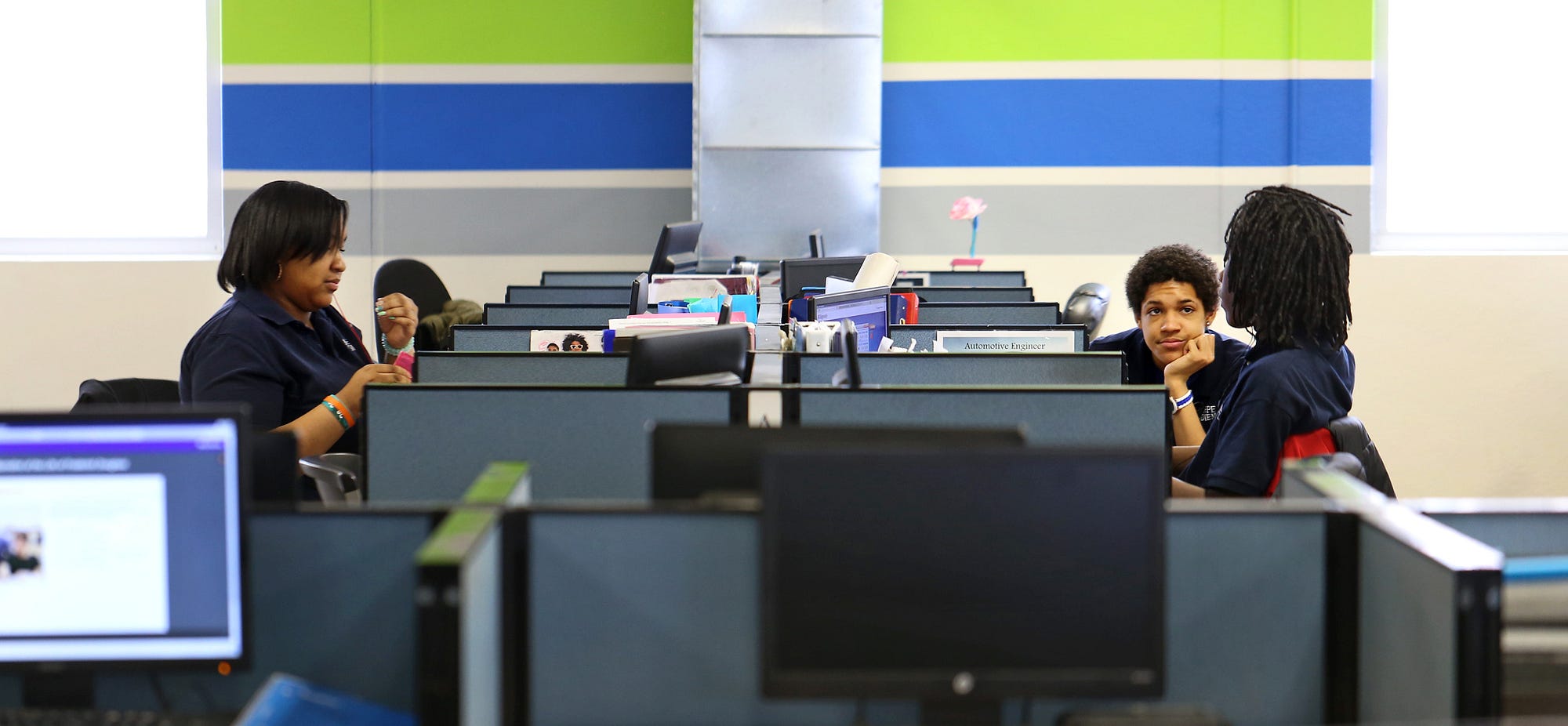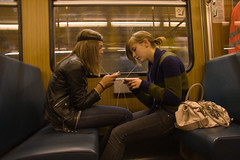
Excited about the possibility that he would project his creativity onto paper, I handed my 1-year-old son a crayon. He tried to eat it. I held his hand to show him how to draw, and he broke the crayon in half. I went to open the door and when I came back, he had figured out how to scribble… all over the wooden floor.
Crayons are pretty magical and versatile technologies. They can be used as educational tools — or alternatively, as projectiles. And in the process of exploring their properties, children learn to make sense of both their physical affordances and the social norms that surround them. “No, you can’t poke your brother’s eye with that crayon!” is a common refrain in my house. Learning to draw — on paper and with some sense of meaning — has a lot to do with the context, a context in which I help create, a context that is learned outside of the crayon itself.
From crayons to compasses, we’ve learned to incorporate all sorts of different tools into our lives and educational practices. Why, then, do computing and networked devices consistently stump us? Why do we imagine technology to be our educational savior, but also the demon undermining learning through distraction? Why are we so unable to see it as a tool whose value is most notably discovered situated in its context?
The arguments that Peg Tyre makes in “iPads < Teachers” are dead on. Personalized learning technologies won’t magically on their own solve our education crisis. The issues we are facing in education are social and political, reflective of our conflicting societal values. Our societal attitudes toward teachers are deeply destructive, a contemporary manifestation of historical attitudes towards women’s labor.
But rather than seeing learning as a process and valuing educators as an important part of a healthy society, we keep looking for easy ways out of our current predicament, solutions that don’t involve respecting the hard work that goes into educating our young.
In doing so, we glom onto technologies that will only exacerbate many existing issues of inequity and mistrust. What’s at stake isn’t the technology itself, but the future of learning.
An empty classroom at the Carpe Diem school in Indianapolis.
Education shouldn’t be just about reading, writing, and arithmetic. Students need to learn how to be a part of our society. And increasingly, that society is technologically mediated. As a result, excluding technology from the classroom makes little sense; it produces an unnecessary disconnect between school and contemporary life.
This forces us to consider two interwoven — and deeply political — societal goals of education: to create an informed citizenry and to develop the skills for a workforce.
With this in mind, there are different ways of interpreting the personalized learning agenda, which makes me feel simultaneously optimistic and outright terrified. If you take personalized learning to its logical positive extreme, technology will educate every student as efficiently as possible. This individual-centric agenda is very much rooted in American neoliberalism.
But what if there’s a darker story? What if we’re really training our students to be robots?
Let me go cynical for a moment. In the late 1800s, the goal of education in America was not particularly altruistic. Sure, there were reformers who imagined that a more educated populace would create an informed citizenry. But what made widespread education possible was that American business needed workers. Industrialization required a populace socialized into very particular frames of interaction and behavior. In other words, factories needed workers who could sit still.
Many of tomorrow’s workers aren’t going to be empowered creatives subscribed to the mantra of, “Do what you love!” Many will be slotted into systems of automation that are hybrid human and computer. Not in the sexy cyborg way, but in the ugly call center way.
Like today’s retail laborers who have to greet every potential customer with a smile, many humans in tomorrow’s economy will do the unrewarding tasks that are too expensive for robots to replace. We’re automating so many parts of our society that, to be employable, the majority of the workforce needs to be trained to be engaged with automated systems.
All of this begs one important question: who benefits, and who loses, from a technologically mediated world?
Education has long been held up as the solution to economic disparity (though some reports suggest that education doesn’t remedy inequity). While the rhetoric around personalized learning emphasizes the potential for addressing inequity, Tyre suggests that good teachers are key for personalized learning to work.
Not only are privileged students more likely to have great teachers, they are also more likely to have teachers who have been trained to use technology — and how to integrate it into the classroom’s pedagogy. If these technologies do indeed “enhance the teacher’s effect,” this does not bode well for low-status students, who are far less likely to have great teachers.
Technology also costs money. Increasingly, low-income schools are pouring large sums of money into new technologies in the hopes that those tools can fix the various problems that low-status students face. As a result, there’s less money for good teachers and other resources that schools need.
I wish I had a solution to our education woes, but I’ve been stumped time and again, mostly by the politics surrounding any possible intervention. Historically, education was the province of local schools making local decisions. Over the last 30 years, the federal government and corporations alike have worked to centralize education.
From textbooks to grading systems, large companies have standardized educational offerings, while making schools beholden to their design logic. This is how Texas values get baked into Minnesota classrooms. Simultaneously, over legitimate concern about the variation in students’ experiences, federal efforts have attempted to implement learning standards. They use funding as the stick for conformity, even as local politics and limited on-the-ground resources get in the way.
Personalized learning has the potential to introduce an entirely new factor into the education landscape: network effects. Even as ranking systems have compared schools to one another, we’ve never really had a system where one students’ learning opportunities truly depend on another’s. And yet, that’s core to how personalized learning works. These systems don’t evolve based on the individual, but based on what’s learned about students writ large.
Personalized learning is, somewhat ironically, far more socialist than it may first appear. You can’t “personalize” technology without building models that are deeply dependent on others. In other words, it is all about creating networks of people in a hyper-individualized world. It’s a strange hybrid of neoliberal and socialist ideologies.
An instructor works with a student in the learning center at the Carpe Diem school in Indianapolis.
Just as recommendation systems result in differentiated experiences online, creating dynamics where one person’s view of the internet radically differs from another’s, so too will personalized learning platforms.
More than anything, what personalized learning brings to the table for me is the stark reality that our society must start grappling with the ways we are both interconnected and differentiated. We are individuals and we are part of networks.
In the realm of education, we cannot and should not separate these two. By recognizing our interconnected nature, we might begin to fulfill the promises that technology can offer our students.
This post was originally published to Bright at Medium on April 7, 2015. Bright is made possible by funding from the New Venture Fund, and is supported by The Bill & Melinda Gates Foundation.


